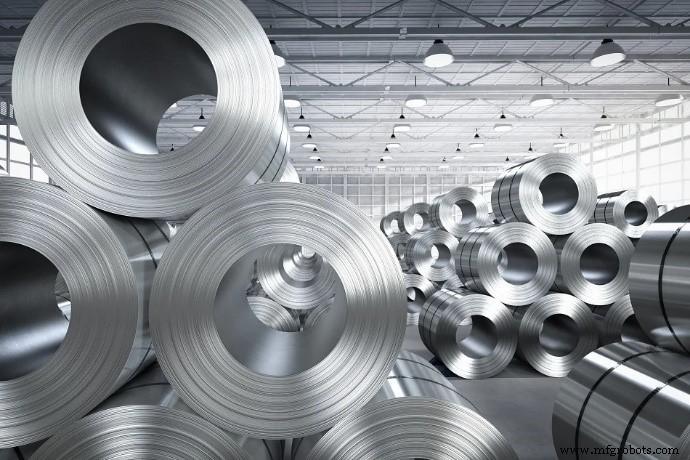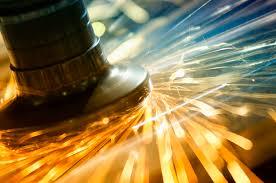25
2025
-
02
Comprehensive Overview of Steel Surface Treatment Techniques
There are four main surface treatment processes for steel: chemical treatment, mechanical treatment, coating treatment and surface alloying treatment.
Chemical treatment
Pickling: Soak the steel in an acidic solution, such as hydrochloric acid, sulfuric acid, etc., to remove oxides, rust and other impurities on the surface. It can make the steel surface reach a certain degree of cleanliness and flatness, providing a good foundation for subsequent treatments such as painting and electroplating. However, acid mist will be generated during the pickling process, which will pollute the environment to a certain extent, and the treated steel surface needs to be neutralized, washed with water and other subsequent treatments.
Blackening treatment: Also known as "blueing" treatment, through chemical surface treatment, a dense oxide film is formed on the metal surface. The main component is ferroferric oxide, which can isolate the air and achieve the purpose of rust prevention. It is suitable for steel parts with low appearance requirements, such as some mechanical parts, tools, etc.
Phosphating treatment: A process of forming a phosphate chemical conversion film by chemical and electrochemical reactions. Phosphate film can improve the adhesion and corrosion resistance of the paint film layer, and is often used for primer before painting; it can also play a role in reducing friction and lubrication in metal cold processing processes, such as in drawing, stamping and other processes, it can reduce the friction between steel and molds.
Mechanical treatment
Grinding: Use tools such as grinding wheels, sandpaper, wire brushes, etc. to grind the surface of steel to remove surface unevenness, oxides and rust, making the surface smoother and more uniform. It can be divided into manual grinding and mechanical grinding. Manual grinding is suitable for small areas and complex shapes. Mechanical grinding is efficient and suitable for large-area steel surface treatment.
Polishing: A finishing method for the purpose of obtaining a smooth surface or mirror gloss. Mechanical polishing uses a polishing machine and a polishing wheel to remove tiny flaws on the surface of steel and improve the surface finish through mechanical friction and grinding; chemical polishing uses chemical solutions to corrode and dissolve the surface of steel to achieve a smooth surface effect.
Shot blasting and sand blasting: Shot blasting is to use shot blasting equipment to project projectiles at high speed onto the surface of steel. Through the impact and friction of the projectiles, impurities such as rust and scale on the surface are removed; sand blasting is to use compressed air to push abrasives (such as iron sand, quartz sand, corundum, etc.) to spray on the surface of steel at high speed, so that the surface obtains a certain degree of cleanliness and roughness. Both methods can improve the adhesion of the steel surface and enhance the durability of the coating.
High-pressure water jet treatment: Use high-pressure water jets to carry abrasives to impact and cut the surface of steel to remove dirt, rust and old coatings on the surface. This method has the advantages of no dust pollution and little damage to the steel surface. It is suitable for surface treatment of steel of various shapes and sizes, but the equipment cost is relatively high.
Coating treatment
Spraying paint: Use compressed air to spray paint on the surface of steel to form a uniform coating, which can play a role in corrosion protection and decoration. Spraying paint is simple to operate and has high construction efficiency. Paints of different colors and performances can be selected according to needs, but the coating thickness is relatively thin and the durability is limited.
Plastic spraying: also known as powder spraying, using an electrostatic generator to charge plastic powder, adsorb it on the surface of steel, and then heat and solidify it to form a coating. Plastic spray coating has good wear resistance, corrosion resistance and decorative properties, thick coating thickness, long service life, but it has high requirements for construction environment and equipment.
Hot dip galvanizing: immersing steel in molten metal liquid, such as hot dip galvanizing, hot dip aluminum plating, etc., so that a layer of metal coating is attached to the surface of the steel, thereby achieving the purpose of corrosion protection. Hot dip galvanizing is the most widely used hot dip plating process. The thickness of the zinc layer can reach tens of microns or even hundreds of microns. It has good corrosion resistance and is suitable for steel products in various outdoor environments.
Electroplating: Using the principle of electrolysis, a layer of metal or alloy coating is deposited on the surface of steel, such as nickel plating, chromium plating, copper plating, etc. The electroplating layer has good corrosion resistance, wear resistance and decorative properties. The thickness and performance of the coating can be controlled as needed, but the electroplating process is expensive and has certain pollution to the environment.
Surface alloying treatment
Carburizing: Heating steel to a high temperature in a carbon-containing medium allows carbon atoms to penetrate into the steel surface to form an alloy layer with a high carbon content. Carburizing can improve the hardness, wear resistance and fatigue strength of the steel surface, and is suitable for parts that bear wear and impact loads, such as gears, shafts, etc.
Nitriding: Nitrogen atoms penetrate into the steel surface to form a nitrogen-containing alloy layer. The nitriding layer has high hardness, wear resistance, corrosion resistance and fatigue resistance, which can increase the service life of the steel. It is often used for surface treatment of precision parts, molds, etc.
Other News





